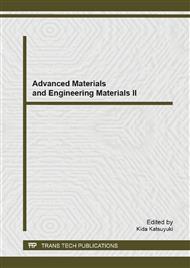p.77
p.82
p.90
p.94
p.98
p.106
p.110
p.116
p.120
Application of Photocatalytic Concrete Paint and its Effect of Decomposing Vehicle Exhaust
Abstract:
With the widely research of Photocatalytic titanium dioxide, researchers have found another way of managing air quality. As an excellent photocatalyst material, nanometer titanium dioxide has begun to be used in road engineering in recent years. In this paper, at first, different content of titanium dioxide were dispersed evenly and separately in a kind of silane solvent to make the coating material with photocatalytic performance. The results show that nanometer titanium dioxide is able to decompose CO, HC, NO and CO2 after being dispersed in silane solvent. The results also show that a certain content oftitanium dioxide can be chosen after considering effect, workability and economic factors in practical application. Then the brushing method and the decomposition effect of the photocatalytic paint are discussed. The tests indicate that proper content of nanometer titanium dioxide with suitable brushing method can maximize catalytic efficiency. At last, in order to study the decomposition mechanism, using ion chromatography and chemical titration to analyze the decomposition products separately, the results prove that nanometer titanium dioxide can decompose NO, HC, CO and other harmful gases into nitrate and carbonate.
Info:
Periodical:
Pages:
98-105
Citation:
Online since:
April 2013
Authors:
Price:
Сopyright:
© 2013 Trans Tech Publications Ltd. All Rights Reserved
Share:
Citation:


